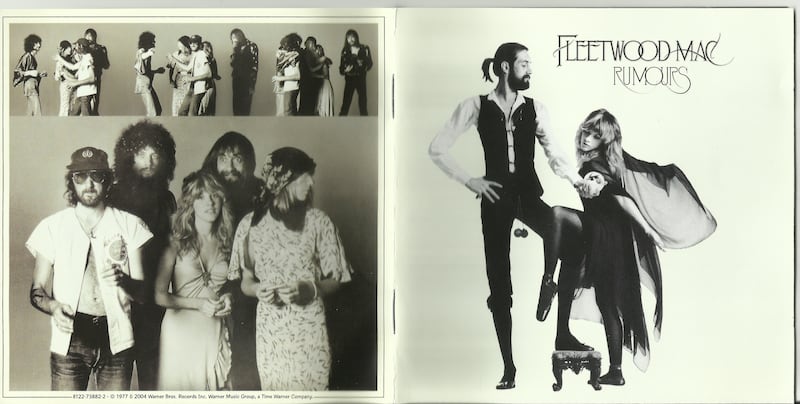What are many Abba songs other than equal parts life-affirming and desperately sad? Just over 10 years ago, the four members of Abba removed themselves from a self-imposed media exile and granted music writer Jan Gradvall individual interviews for the Swedish financial newspaper Dagens Industri. Immediate rapport and trust were established, and repeated interviews followed, the result of which forms the spine of the particularly insightful The Book of Abba – Melancholy Undercover (Faber, £20).
Alongside stand-alone interviews with Benny Andersson, Agnetha Fältskog, Anni-Frid Lyngstad Reuss and Björn Ulvaeus, Gradvall writes about the development of Swedish pop music, from “schlager songs” and “progg wave” to the country’s Communist Party, SKP, denouncing rock music as “an expression of American cultural imperialism”.
Into this mix emerged the likes of Waterloo; Dancing Queen; Mamma Mia; Knowing Me, Knowing You and million-selling compilation albums such as Abba Gold. As for the “melancholy” of the book title? That, explains Andersson, comes from the Nordic folk music he grew up listening to and what he terms “the vodka belt”, the drinking culture adopted through the ages by Nordic countries and Baltic nations to get them through the 18 hours per day of the winter months. “The darkness,” says Andersson. “It emerges when you play.” Ring, ring!
There was darkness, too, in New York City’s Greenwich Village, but only on the way from the dressing rooms to the stages in the numerous venues that dotted the area where the likes of Billie Holiday, Tom Paxton and Bob Dylan sang for their supper. Throughout Talkin’ Greenwich Village by David Browne (Hachette, £28), the author details in a dispirited if pragmatic tone how many of those venues have disappeared (replaced, he writes, by “banks, drugstore chains and upscale restaurants”).
READ MORE
With clever sleight of a writer’s hand, however, and through an abundance of meticulous research and interviews (with more than 150 people associated with the music community), Browne conjures up a real sense of what such a breeding ground was like in the 1960s. Browne is also smart enough not to make his singular, incisive book all about Dylan, Greenwich Village’s most famous alumnus. Populating the pages are performers such as Judy Collins, Carolyn Hester and many lesser-known names, each with fascinating stories or intriguing asides. One such side note involves Dave Van Ronk, who in 1961 told the fledgling Dylan to “forget the Guthrie 30s idolisation and get on with the business of the 60s”, advice that the songwriter clearly took to heart.

UK guitarist Eric Clapton gave similar wise advice (“You’ll never be a star if you dress like that”) to Fleetwood Mac’s original guitarist Peter Green. Alas, Green would not last the distance, but the band he cofounded would. In what is a thorough breakdown of the life, times and membership of one of the world’s most successful rock/pop groups, Dreams: The Many Lives of Fleetwood Mac, by Mark Blake (Nine Eight Books, £22), there is an overriding sense of what the book title implies: too much self-serving conflict, turbulence and melodrama.
Documenting such, however, makes for a series of revealing and hilarious ripping yarns, one of which involves an incident in 2018 when, during a speech at an awards ceremony, Stevie Nicks accused her band member ex, Lindsey Buckingham, of “smirking” at her; Buckingham was subsequently fired. Dreams? Loads of those. Sweet dreams? Not so much.
Dreams of something beyond the avaricious or even moderately commercial weave their way through Behind the Moon: Five Early ‘90s Indie Albums by Tim Blanchard (Crackle & Hiss, £14.99). The author chooses five albums released between 1990 and 1993 (Reading, Writing and Arithmetic by The Sundays; Viva Dead Ponies by The Fatima Mansions; Jordan: The Comeback by Prefab Sprout; Drift by The Apartments; and I’ve Seen Everything by Trashcan Sinatras) and interlinks them in the context of music industry terms, political background, and “because they express something important about living through what could be a poisonously bland age – as well as a spirit of resistance against it”.
With excellent, quite learned writing and pithy descriptions throughout, Blanchard does a great service of rescuing the music from complete obscurity apart from all but the most avid fans. He is also the owner of some cracking pen portrayals, noting that ex-Microdisney and Fatima Mansions singer Cathal Coughlan looked “like a bull that’s broken out of its metal-barred pen and found there’s nowhere else left to go”.

“Maybe, I’m trying to make little films with my music and photos,” writes John Grant in the introduction to his debut published work, The Illustrated Lyrics (Abacus Books, £30). Grant is well-known for his command of languages (he is fluent in German, Icelandic, Russian and Spanish, and can converse moderately well in French and Swedish), so it’s a given he is responsible for songs that are equally expressive and eloquent. Lyrics from all of his six studio albums to date are collected here, interspersed with phone photos (“some of them I consider to be part of my art”), yet to highlight some lines over others seems unwise. That said, if there are smarter, wittier lyrics than to be found in the likes of Queen of Denmark, GMF and Glacier, then we have yet to read or hear them.

Is anyone thinking of Christmas yet, and if so do you know anyone in your circle of family and friends who loves Dolly Parton? If so, your gift woes are over with Dolly Parton: All the Songs. The Story Behind Every Track, by Simon Benoit, Damien Somville and Lalie Walker (Black Dog, $60). Packed into 600 pages and presented in impregnable coffee-table fashion, the authors dip deep into Parton’s discography. The result is an exhaustive trawl from the 1950s (“A tin can stuck on a stick, which she wedged between the boards of the veranda, was Dolly Rebecca Parton’s first microphone”) to 2022′s Run, Rose, Run, the singer’s 45th studio solo album. The track-by-track appraisals might do little more than scratch the surface but for the fan who wants to flick through page after page of detail without being overburdened by critical analysis, the weighty book ticks most of the boxes nicely.
[ Abba demand Trump campaign stop using their music at campaign ralliesOpens in new window ]
Anyone for more than a box-ticking exercise? Uncommon People: Britpop and Beyond in 20 Songs by Miranda Sawyer (John Murray, £25) sees the respected UK music writer/author look at songs by the likes of Blur (Girls and Boys), Suede (The Wild Ones), Oasis (Slide Away), Pulp (Common People), Radiohead (No Surprises) and Ash (Girl from Mars) and place them in the context of “musicians that ran with the central Britpop idea of making pop tunes whilst not compromising on invention or identity”. Sawyer’s song choices are smart (if obvious) and are aided by her having been embedded in the era’s London-based music scene. “Britpop wouldn’t have happened without Blur,” she contends, while Ash’s Irish entry receives a nimble definition: “a young man’s dance floor riot tribute to the ultimate manic pixie dream girl”. An excellent dip-in/dip-out book of a time and place (and music) that merits revisiting.












